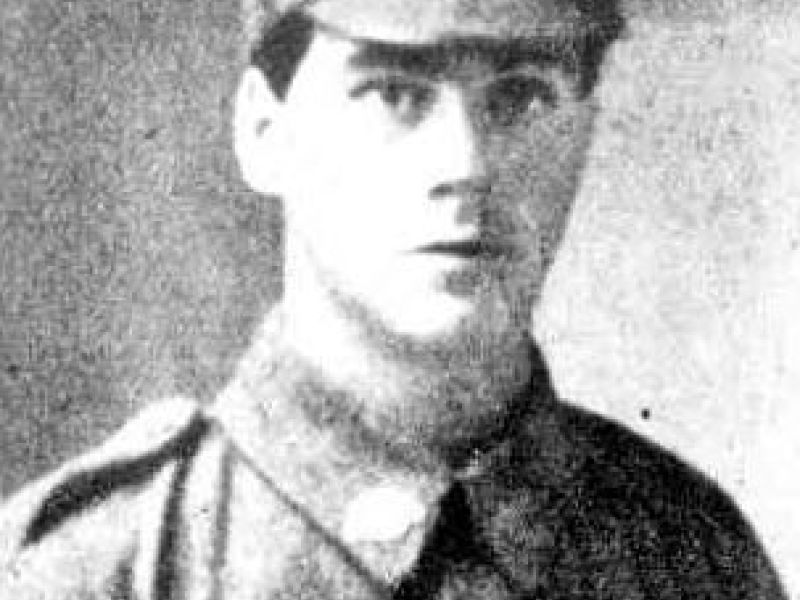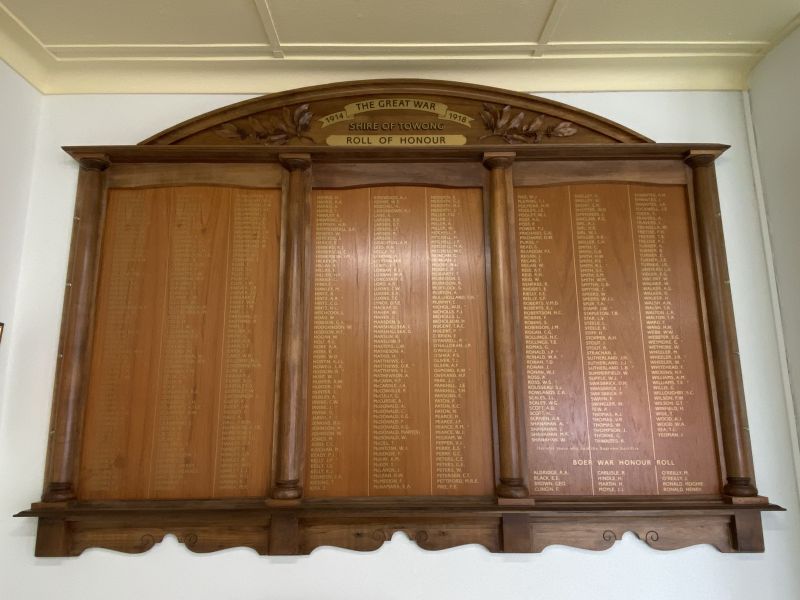Anthony Shanahan
Anthony was born in Tallangatta in 1887, the fourth child of Timothy “Barney” and Ellen (née Mongan) Shanahan. He would eventually have nine other siblings, although four would die young, and a younger brother, William, would also die in the war. During his younger years he attended the Noorongong State School No. 3073.
Anthony enlisted on the 25th of July 1915 at Liverpool in New South Wales. At the time he was a single, 28 year-old letter carrier. He was allocated the Regimental Number 2790 and placed in the 6th Reinforcements for the 18th Battalion.
After initial training the 6th Reinforcements embarked on HMAT A14 Euripides at Sydney on the 2nd of November 1915. Arriving in Egypt he was transferred to the 3rd Battalion at Tel-el-kebir on the 14th of December. The 3rd were part of the 1st Brigade of the 1st Australian Division. In late March the battalion embarked on HMTS Grampian at Alexandria in Egypt, arriving at the Port of Marseilles in southern France six days later.
The battalion that arrived in France was a very different one that had landed on the shores of Gallipoli nearly one year before. After the evacuation of the Peninsula, and while resting and training in Egypt, the AIF was “doubled” in size. The 4th and 5th Divisions were added to the 1st and 2nd. The sixteen battalions which had fought in Gallipoli were split, with half the personnel in each going to form a ‘pup’ or ‘daughter’ battalion. The 3rd Battalion’s pup was the 55th Battalion, part of the 14th Brigade in the 5th Division. To many of the original members of the “parent” battalions this sequence of events was quite disturbing, it compared to being taken from your family. This was the atmosphere in which Anthony became part of the 3rd Battalion.
He would soon face his baptism of fire with the planned assault on the village of Pozieres in the Somme Valley. Three Australian Divisions, the 1st, 2nd and 4th, would form the right flank of the British Front. The 1st Division, which included the 3rd Battalion, was committed to attack the village of Pozieres. Although the battle would not take place until later in July, active patrolling took place beforehand in order to gain information on the disposition of enemy forces and fortifications facing the Australians.
On the first day of July 1916, the 3rd Battalion was in the front line at FleurBaix. The battalion’s war diarist wrote that work continued on the front parapet of their trenches. Both enemy aeroplanes and trench mortars were active resulting in one soldier being wounded. In the evening, a party under 2nd Lieutenant Agnew went out with blocks, tackle and grappling irons to try and drag away the enemy wire. The party got across no-man's land but owing to enemy artillery fire they returned without completing the task. It was not only enemy artillery that was active but also enemy sniper fire.
A witness to what happened to Anthony was Pte. Albert Wilson (2847), who was also part of D Company of the 3rd Battalion. While Albert was in hospital at the 3rd Southern General Hospital in Oxford he wrote the following account to the Red Cross.
“I knew a man called Shanahan 2790 (3., D., XV or XVI?) We left Australia together on 2nd Nov. 1915 with 6th Reinforcements in 18th Battalion. He was transferred to the 3rd Battalion in February 1916, and was with us at Fleur Baix about July 1st or 2nd when he went out on patrol. He was shot through the heart by a sniper, and killed instantaneously. I was wiring in front, and I saw him being brought back through the sally port, and recognised him. He was buried at the Cemetery at Fleur Baix, behind the firing line. I feel sure it must be the same man as I remember him [sic] Regimental number.”
Anthony was initially buried in Brewery Orchard Cemetery, Bois Grenier, 4 kilometres south of Armentieres. After the Armistice, many of the soldiers buried in smaller cemeteries were reinterred into larger ones. Anthony’s remains were reinterred in the Rue-David Military Cemetery at Fleurbaix, France, 5 kilometres south-west of Armentieres.
Anthony’s death was recorded in Thursday the 20th of July 1916 edition of the Upper Murray and Mitta Herald.
“DEATH OF NOORONGONG SOLDIER
Mr Timothy Shanahan, of Noorongong, who has given three sons to the Army, on Monday received bad news concerning one of them, Anthony. Senior-constable Quinn, in the absence of Father Lawless, conveyed to Mr. Shanahan a telegram from Colonel Luscombe, Victoria Barracks, Sydney, was killed in action on 1st July. The telegram concludes:- “Convey deep regret and sympathy of their Majesties, the King and Queen, and the Commonwealth Government, in the loss that they and the army have sustained by the death of the soldier.” Tho [sic] many friends of the Shanahan family will hear this news with great regret, and the wish of the safe return of the other two lads will be general and cordial.”
In August of that year, Timothy and Ellen received a letter from Anthony’s Commanding Officer.
“Dear Sir, - I regret to say that your son, Pte. A. Shanahan, was shot while on patrol in No Mans Land on the night of 1/7/16. He was killed instantly, and his body brought in and buried in the R.C. cemetery next day. He was engaged upon a difficult and dangerous duty, necessary for the safety of his comrades - a duty for which volunteers were called, and only picked men from them sent out. His worth is shown by the fact that out of 16 men chosen from the company he and two more were the only men who were not on the Peninsula. He was a gallant soldier and a good comrade, and his loss is deeply mourned by every officer and every man of the company. Please accept my very deepest sympathy in your loss.
Yours sincerely,
J.R.O. Harris
O.C., D Coy. 3rd Bn.”
Anthony is remembered on the Australian War Memorial Roll of Honour and the Towong Shire Boer War and WW1 Memorial in the Memorial Hall in Tallangatta. For his service he was awarded the 1914-1915 Star, the British War Medal and the Victory Medal.

 Stephen Learmonth
Stephen Learmonth